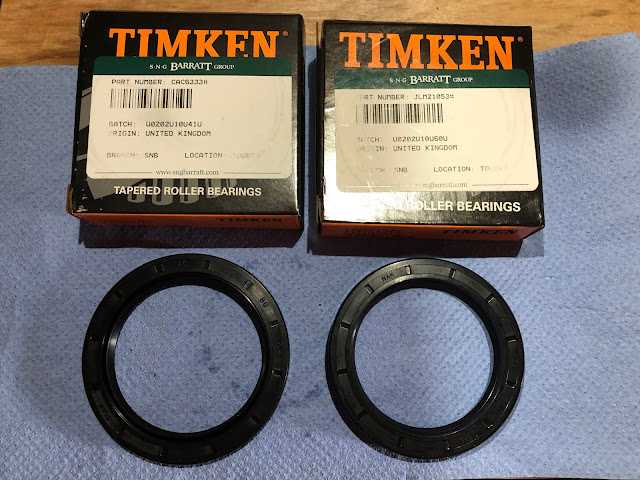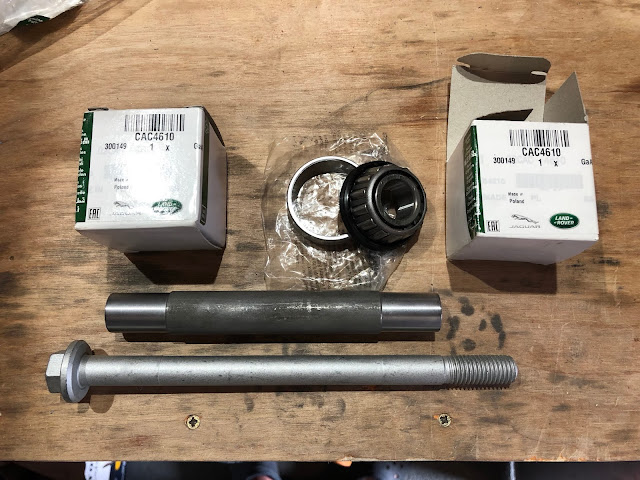So with all the bearing races installed into the rear hubs, now I can crack on with greasing the bearings and finally re-building the hubs, yes?
Well not quite.....
While at this point, the AK Build Manual would have you packing the bearings and installing them and the seals back in the hub carriers, the build manual appears to be silent on the subject of checking the pre-load on the bearings.
Maybe the AK logic (and that it seems of many builders) is that if you have kept all the parts from the donor hubs together as you strip them apart, and make sure you put all the same parts back into the same hubs, then everything will be OK.
Maybe...although that does presume that everything was actually OK when the hubs were taken apart. And in any case, the Jaguar X300 Service Manual includes tolerance specifications for rear hub bearing pre-load and requires the preload to be checked when replacing the bearings; so it would seem that this is something that is important to check.
Basically it is necessary to "dry" assemble the hub with the bearings and the largest available adjustable spacer, measure the end float of the hub and use that measurement to calculate the required thickness of adjustable spacer needed to achieve the necessary level of float/pre-load within the required tolerances.
(Note that the largest thickness of adjustable spacer that Jaguar make is 3.47mm. I purchased a 3.42mm spacer in error but, assuming that my required spacer thickness is less than this, then I should still be able to use it to calculate the required thickness)
 |
| The outer bearing is installed on the hub without the oil seal |
 |
| Hub inserted into carrier and fixed spacer installed (chamfer facing towards inner bearing) |
 |
| 3.42mm Spacer is then installed... |
 |
| ...followed by Inner Bearing (again without oil seal) |
 |
| ABS Ring placed onto the end of hub shaft and pressed into place |
The hub assembly then needs to be put into compression to tighten up the bearings to the spacers. The Jaguar Service Manual is not exactly clear how to achieve this. So I installed the stub axle into the hub, installed the original conical spacer and original driveshaft nut and used an air wrench, set to the maximum torque setting, to try and put the whole assembly into a reasonable amount of compression.
 |
| Stub axle being installed into hub... |
 |
| ...and then tightened up to put bearings and spacer into compression |
The next step is then to measure the end float on the hub. This needs to be done with a dial gauge. Fortunately, I acquired such an instrument many years ago when I rebuilt the gearbox on my TransAm; I knew I would find a use for it again one day!
I sat the hub carrier on a spare piece of steel sheet on my workbench to make sure it was sat completely flat and stable. The magnetic base of the dial gauge was mounted onto my vice and the gauge set onto the face of the hub and zeroed.
I then used a screwdriver between the hub and the carrier to gently lever the hub up as far it would go and checked the reading on the gauge.
 |
| Set-up for measuring end float of hub |
 |
| Gently levering the hub upwards shows an end float of 0.0135in (0.343mm) |



































